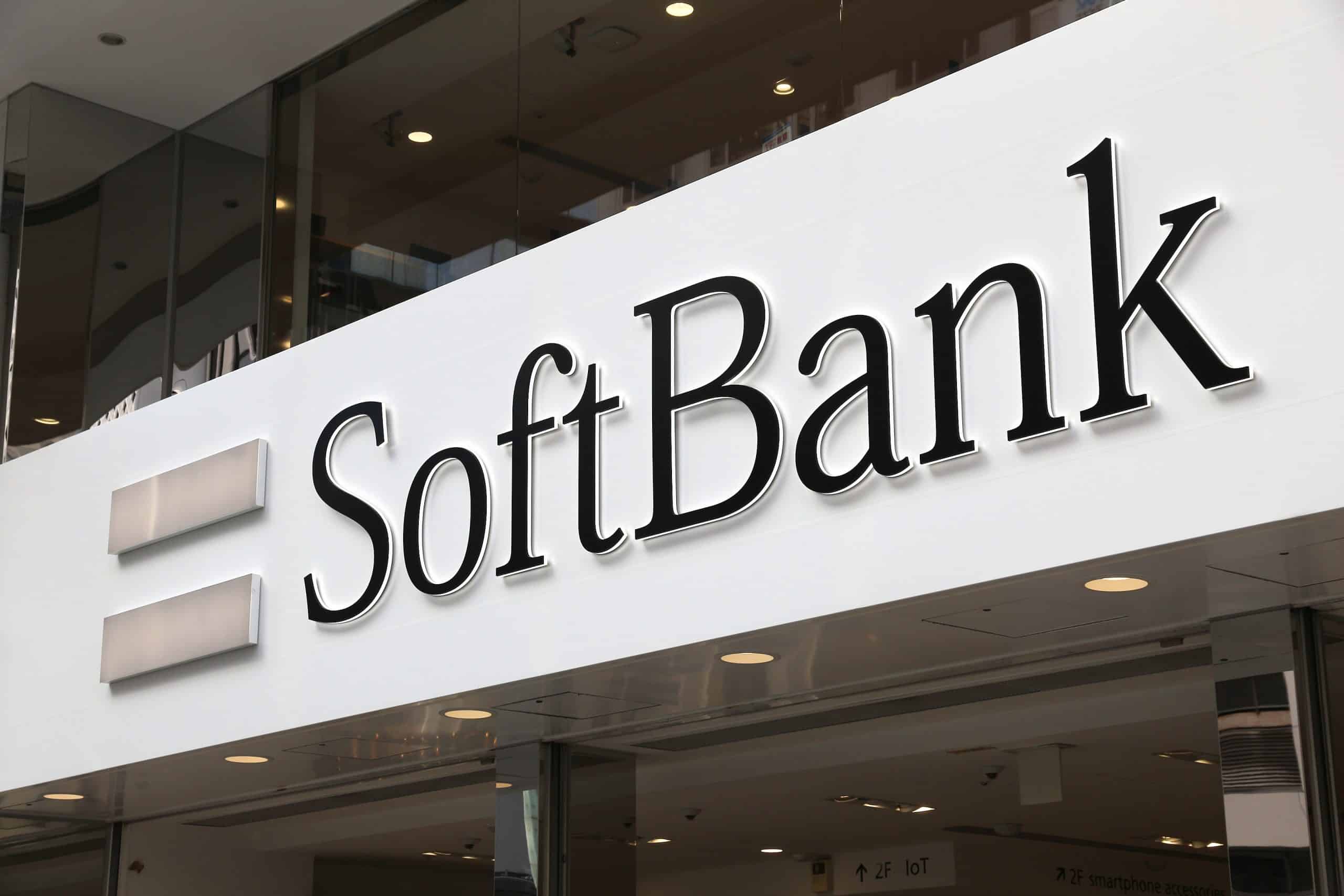The Significance of SoftBank’s PayPay Applying for a U.S. Listing in the Fintech Landscape
SoftBank’s decision to have PayPay apply for a U.S. listing marks a major shift in the fintech landscape. This Japanese mobile payments platform has rapidly gained traction, demonstrating the potential for growth in the financial technology sector. By seeking to enter the U.S. market, PayPay aims not only to expand its user base but also to tap into the wealth of financial services available across the country.
The significance of this application is multifaceted. First, PayPay is entering a highly competitive market dominated by established players such as PayPal, Venmo, and Square. Competing with these giants will require innovative solutions and a clear value proposition. You might wonder, what unique offerings will PayPay bring to the table?
One of the key advantages of PayPay is its strong backing from SoftBank, a major player in the tech and investment sectors. This support gives the platform financial stability and the capacity to invest in technological advancements. The fintech industry is evolving rapidly, and substantial capital will allow PayPay to enhance its features and services, keeping pace with customer demands.
When discussing PayPay’s probable U.S. introduction, it’s essential to consider current payment trends. The increasing reliance on contactless payments, especially post-pandemic, has transformed consumer behavior. People now prefer digital transactions, and PayPay’s mobile-first approach aligns perfectly with this trend. As you think about your payment options, consider how convenient it is to use apps that facilitate quick transactions.
Various factors contribute to the success of fintech companies in new markets. Here’s a concise list of aspects to consider:
User Experience: A seamless and user-friendly interface encourages more consumers to adopt the service.
Security: Robust security measures are crucial in building trust with users.
Regulatory Compliance: Adhering to U.S. financial regulations will be essential as PayPay looks to establish itself.
Marketing Strategy: Crafting a targeted campaign to raise awareness about the brand is key to attracting customers.
Customer loyalty is another vital aspect. PayPay must ensure excellent customer service and engagement to build trust. Loyalty programs, referral bonuses, and community engagement initiatives might resonate well with consumers looking for reliable payment solutions. It’s crucial for PayPay to prioritize the needs of its customers as it establishes itself in the U.S. marketplace.
The venture into the U.S. market will also offer PayPay access to a greater pool of technical talent. The United States is known for its robust tech ecosystem, abundant in skilled developers and innovators. This resource can help PayPay fine-tune its technology and keep its offerings at the forefront of the industry. Working with experienced professionals could greatly improve PayPay’s competitiveness and capacity for growth.
Investor interest is another aspect to consider. A successful U.S. listing could attract significant investor funding, providing additional capital for expansion and innovation. PayPay’s move into the public market could bolster its credibility, showcasing the company’s commitment to transparency and progress. As you follow PayPay’s trajectory, watch for how potential investors respond to its strategies and offerings.
However, there are challenges on the horizon. Navigating the U.S. regulatory landscape can be complex. Financial technology is subject to numerous local and federal regulations, and compliance will be crucial. PayPay will need to work closely with legal experts to ensure it meets all necessary requirements while maintaining agility in its operations.
The excitement surrounding PayPay’s U.S. listing application sits within a broader narrative of globalization within the fintech sector. The crossover of fintech solutions across borders is prevalent, with companies seeking broader markets for growth. PayPay’s entry symbolizes this trend, showcasing how technology can transcend geographical boundaries and cater to diverse consumer needs.
SoftBank’s PayPay applying for a U.S. listing represents a significant development in the fintech world. Its success will hinge on various factors, from user experience to regulatory compliance. As PayPay embarks on this journey, all eyes will be on how it navigates the challenges and opportunities that lie ahead. As you keep an eye on these developments, it’s vital to consider the implications for the wider fintech landscape and the services that will ultimately benefit you as a consumer.
Impacts of Increased Competition in the U.S. Market on Global Digital Payment Solutions
The landscape of digital payment solutions has seen a transformational shift over recent years, particularly with the surge of competition in the U.S. market. As traditional and new players vie for consumer attention, the impacts of this rising competition are profound, affecting not only businesses but also the way consumers engage with payment technologies globally.
Increased competition promotes innovation. Companies are compelled to enhance their offerings to attract and retain customers. This trend leads to the introduction of cutting-edge technologies and more user-friendly interfaces. For instance, digital wallets are becoming increasingly sophisticated, integrating features such as budgeting tools and loyalty rewards. Consequently, consumers benefit from more versatile payment options that suit their individual needs.
Another impact of heightened competition is the reduction of transaction fees. As businesses compete, they often lower prices to gain a competitive edge. This is especially relevant for small businesses, which can utilize cost-effective payment solutions to operate more efficiently. Lower fees associated with digital transactions mean that consumers can enjoy savings, making digital payments even more appealing.
The expansion of new entrants into the digital payment market also poses a significant challenge to established players like PayPal and Square. New companies often target niche markets or specific consumer demographics, providing tailored solutions that address unique needs. By doing so, they encourage established brands to rethink and refine their services. This cycle of competition fosters an environment where all companies must innovate continuously or risk falling behind.
With the rise in competition, user experience has become a priority. Companies are investing heavily in research to understand consumer behavior and preferences. Features such as streamlined onboarding processes, advanced security measures, and responsive customer service are becoming standard. As digital payments evolve, the emphasis is on providing an effortless experience that enhances customer satisfaction.
Furthermore, competition has accelerated the adoption of digital payment solutions across different sectors. Retail, hospitality, and e-commerce are integrating these technologies at a rapid pace. As consumers become comfortable with making transactions online and through mobile apps, this trend is likely to continue. Businesses that embrace this shift can capitalize on the growing preference for digital payments, positioning themselves as forward-thinking leaders in their industries.
However, the increased number of players in the market can result in fragmentation. With numerous solutions available, it can be overwhelming for consumers to choose the right option. Confusion may arise around the differences between various platforms, leading to potential hesitance in adoption. Businesses must work diligently to communicate clear value propositions to help customers navigate these choices effectively.
As competition strengthens, regulations also come into play. Governments are aware of the changing landscape and might implement rules to ensure fair practices and consumer protection. Companies must adapt to these regulations swiftly or risk penalties. An example would be data protection laws that require businesses to protect consumer information securely. As the market matures, expect to see an increased focus on compliance and security measures in digital payment solutions.
The international market is observing the U.S. competition’s impacts, which could lead to global ripple effects in payment solutions. For instance, businesses outside the U.S. may start to emulate innovative strategies from successful American firms. This cross-pollination of ideas can accelerate advancements in payment technology worldwide, benefiting consumers everywhere.
Moreover, as American companies innovate and adapt under competitive pressure, partnerships may emerge to leverage complementary strengths. For instance, a tech startup specializing in blockchain technology might collaborate with a digital payment provider. Such collaborations can lead to robust solutions that drive the industry forward.
In this climate of competition, strategic marketing has become crucial. Businesses need to effectively communicate their unique value propositions to attract customers. Creating brand loyalty is more important than ever, and companies are leveraging social media campaigns and influencer partnerships to engage with potential users. The need to cultivate a strong brand presence will only increase as the landscape evolves.
Ultimately, the increased competition in the U.S. digital payment market is reshaping the global landscape. It drives innovation, enhances user experience, lowers costs, and encourages market expansion. As businesses adapt and react to continuous changes, consumers will likely benefit from better options and more efficient services in the realm of digital payments.
Conclusion
SoftBank’s PayPay applying for a U.S. listing marks a pivotal moment not just for the company, but for the entire fintech landscape. By entering one of the most competitive digital payment markets in the world, PayPay is set to challenge established players and spur innovation across the board. This move reinforces the importance of adaptability and creativity in a rapidly evolving sector, reminding us that new entrants can frequently reshape industry norms.
The potential influx of competition from PayPay could lead to enhanced services for consumers, as companies strive to outdo one another in terms of user experience, security features, and transaction efficiency. As more fintech solutions flood the U.S. market, customers may benefit from lower fees and more options tailored to their needs, ultimately driving growth within the financial technology ecosystem.
Moreover, PayPay’s entry into the U.S. market expands its global reach and diversifies its operational landscape. This strategy not only fortifies its position against regional competitors but also opens doors to collaborations with local firms, which can leverage their existing user base and infrastructure. As the digital payment solution evolves to meet user demands, PayPay’s presence is likely to accelerate the adoption of cutting-edge fintech innovations.
SoftBank’s PayPay applying for a U.S. listing signifies an exciting new chapter that will resonate across the fintech sector. It emphasizes the importance of maintaining consumer-first strategies as the market grows more competitive. You can expect to see significant changes in digital payment solutions as these developments unfold, benefiting users and financial institutions alike. Keep an eye on this space as it evolves!
Comparison, examination, and analysis between investment houses
Leave your details, and an expert from our team will get back to you as soon as possible
* This article, in whole or in part, does not contain any promise of investment returns, nor does it constitute professional advice to make investments in any particular field.
To read more about the full disclaimer, click here- Articles
- •
- 18 Min Read
- •
- ago 5 minutes
 INTEL’S FRANKFURT-LISTED SHARES RISE 3.6% AFTER REPORT US COULD TAKE STAKE IN CHIPMAKER
INTEL’S FRANKFURT-LISTED SHARES RISE 3.6% AFTER REPORT US COULD TAKE STAKE IN CHIPMAKER
The Impact of Intel's Frankfurt-Listed Shares Rise and the Potential Stake from the US Government Intel's Frankfurt-listed shares recently experienced
- ago 5 minutes
- •
- 18 Min Read
The Impact of Intel's Frankfurt-Listed Shares Rise and the Potential Stake from the US Government Intel's Frankfurt-listed shares recently experienced
- Articles
- •
- 19 Min Read
- •
- ago 1 hour
 GOLD HEADS FOR WEEKLY LOSS AFTER REPORT SHOWS US INFLATION SURGE
GOLD HEADS FOR WEEKLY LOSS AFTER REPORT SHOWS US INFLATION SURGE
The Impact of the Recent US Inflation Surge on Gold Prices The recent surge in US inflation has sent ripples
- ago 1 hour
- •
- 19 Min Read
The Impact of the Recent US Inflation Surge on Gold Prices The recent surge in US inflation has sent ripples
- Articles
- •
- 18 Min Read
- •
- ago 2 hours
 TENCENT’S EARNINGS BEAT SPARKS PRICE TARGETS SHOWING 16% GAIN
TENCENT’S EARNINGS BEAT SPARKS PRICE TARGETS SHOWING 16% GAIN
The Implications of Tencent’s Earnings Beat on Market Price Targets and Potential 16% Gains The remarkable performance of Tencent in
- ago 2 hours
- •
- 18 Min Read
The Implications of Tencent’s Earnings Beat on Market Price Targets and Potential 16% Gains The remarkable performance of Tencent in
- Articles
- •
- 18 Min Read
- •
- ago 2 hours
 DATA CENTERS NEED OWN POWER SUPPLY, US GRID WATCHDOG SAYS
DATA CENTERS NEED OWN POWER SUPPLY, US GRID WATCHDOG SAYS
The Importance of Dedicated Power Supplies for Data Centers: Insights from the US Grid Watchdog In recent discussions, the U.S.
- ago 2 hours
- •
- 18 Min Read
The Importance of Dedicated Power Supplies for Data Centers: Insights from the US Grid Watchdog In recent discussions, the U.S.












